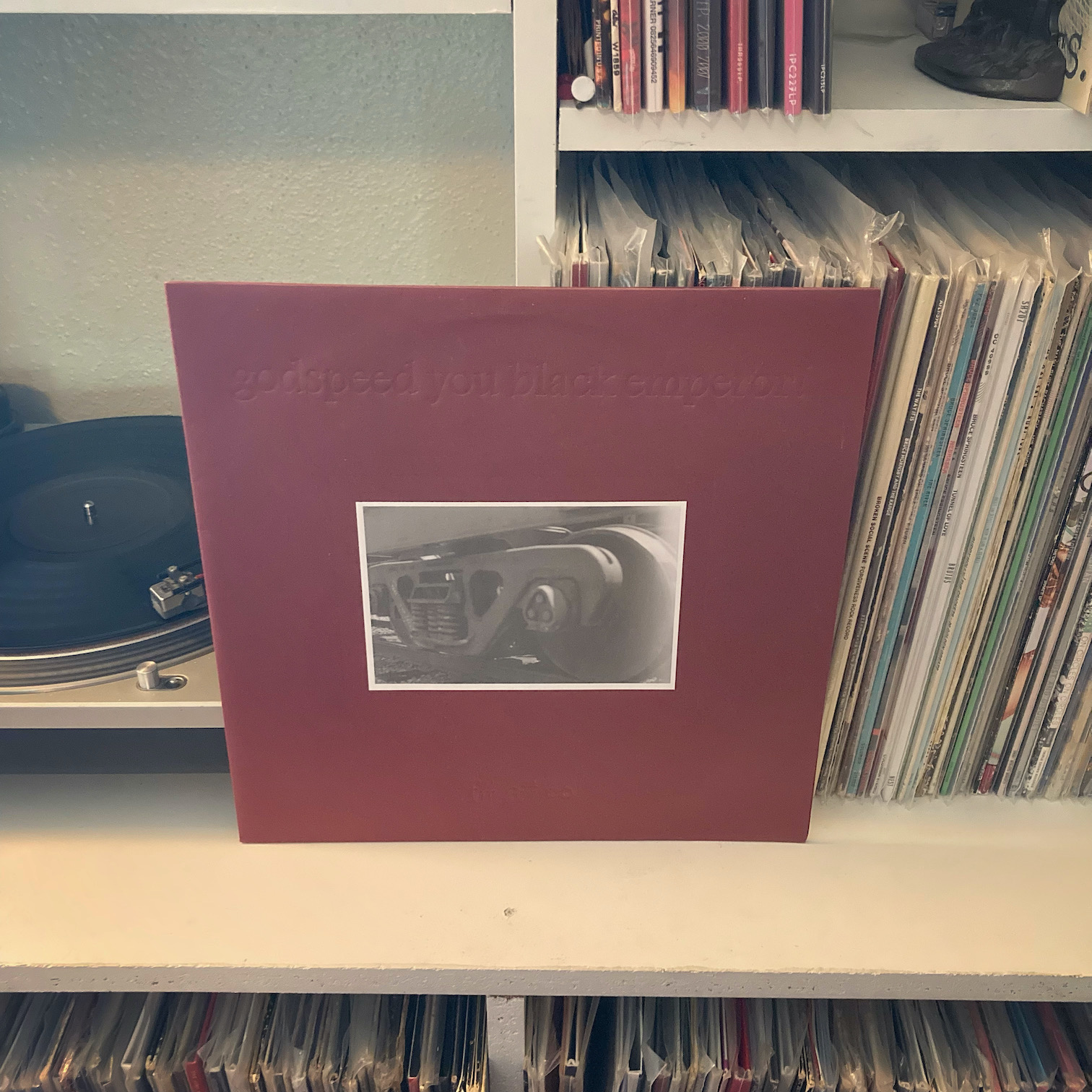
Few bands have such celebrated reputations as Godspeed You! Black Emperor. They are inarguably one of the pillars of the post rock movement—and rightly so. Their body of work is marked by a fiercely uncompromising vision, their albums filled with lengthy compositions that make no effort to be accessible. At this point in history, fans and critics alike revere their experimental ethos and artistic stubbornness.
But debuting with that sort of vision without the benefit of the legacy is a different sort of monster. The legendary post rock collective might be able to get away with releasing an album with two twenty-minute songs with multiple movements and no lyrics, but as a debut? That’s a bit more difficult to sell as an introduction.
Lucky for us though, Godspeed didn’t let pesky things like marketability or accessibility get in the way of their debut record.
Looking at GBYE’s legacy, F♯ A♯ ∞ has no surprises. The vinyl edition—which was the only way the album was available for the first year after its release—only labels two tracks, each filling the entirety of its respective side (the CD edition was 25 minutes longer, the movements divided up differently between three tracks). Calling the two tracks “twenty-minute songs” is a bit of a misnomer though, as there are distinct divisions between these movements—distinct enough that the CD edition even listed definite titles and time stamps for each.
If you’re looking for a representative moment of the album as a whole, you’ve got a tough task ahead of you. Strings and horns are regular features, as is a traditional guitar/bass/drums combo. But there are several moments of noisy tape loops, a few banjo sections, and even bagpipes. Spoken word samples punctuate the movements, none more famous than the orchestra-accompanied monologue in “Dead Flag Blues,” the opening movement for “Nervous, Sad, Poor…”
Each movement fades into the next, almost as if the listener were walking down a long hallway of performance spaces, poking their head in for a few minutes of each before moving on to the next. A few of these movements feel like proper songs captured in-media-res, such as “The Cowboy…” or “Kicking Horse on Brokenhill,” the penultimate movement on “Bleak, Broken, Beautiful…” Other movements feel less like performances and more like audio installations played on perpetual motion tape machines, droning noise experiments repeating with mechanical persistence, stopping only by the listener’s “leaving” of that space. Only “Untitled,” the closing section of the first side, seems to catch the performer by surprised, a voice asking, “what should I play?” as he aimlessly fidgets on a banjo.
You might read this description and think the album sounds unfocused. But somehow, there is a single second of the record that sounds out of place. It feels like a sort of kaleidoscope, the fractured pieces of mood, timbre, and genre shifting around the viewfinder to create a spectacular display. It’s the exact kind of record Godspeed is celebrated for making, but the fact that this record was made without the burden of that reputation—or the eager expectations from their audience—makes it a truly special record.